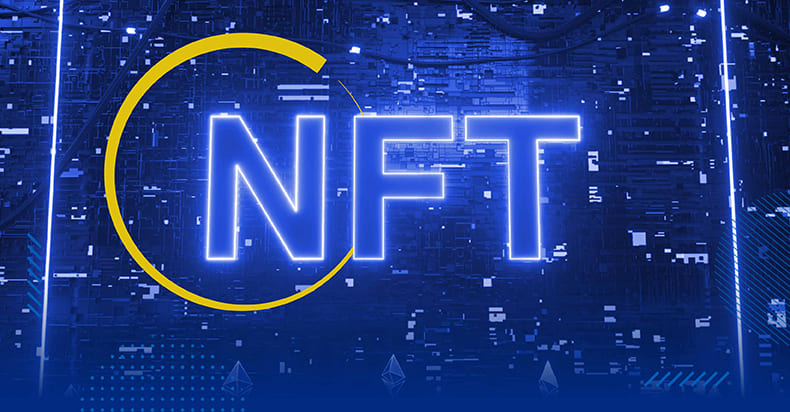
NFT has become one of hot commodity lately. From funny pop-tart cat memes that sell for $590,000 to nearly $3 million for purchasing screenshots of the first tweet of 2006. In Indonesia, for example, Ghozali made waves by earning around 1.5 billion rupiah from selling his selfies as NFTs on OpenSea, the largest NFT marketplace.
However, this fast-growing crypto art trend is turning out to be more than just selling images and videos at exorbitant prices; this trend is also the gateway to bringing exclusive ownership to the digital world. When you own an NFT, you gain unique privileges and status; something that appeals to today’s modern consumers.
Strategic uses for NFT are now emerging. It will be interesting to see how certain brands use NFT to develop their loyal community. These communities can eventually be leveraged to transform and modernize their loyalty programs. By offering NFT, businesses have a new way to identify the most loyal and potential customers to spend money on their brand.
With the current buzz around NFTs, it’s clear this technology offers exciting opportunities for digital collectors, artists, and businesses. But how exactly can NFTs impact loyalty programs? And how can they bring a fresh, innovative twist to customer engagement?
What is NFT?
NFTs, or Non-Fungible Tokens, gained massive popularity in 2021. In simple terms, an NFT is like a digital certificate of ownership, powered by blockchain technology. The term "non-fungible" means that each NFT is one-of-a-kind and cannot be replaced or replicated by anything else.
Think of NFTs as unique digital assets that are stored on a blockchain; a secure, decentralized network where data is verified and locked in place once confirmed. This ensures the information is accurate, consistent, and permanent.
In the digital world, NFTs act as exclusive items that can be bought, sold, or traded, just like physical assets. Each NFT contains detailed records, such as its name, description, creator, previous owners (if resold), and current owner.
To put it simply, an NFT is like a digital fingerprint; unique, traceable, and impossible to duplicate.
Why are People Hyping NFT?
The NFT market has exploded from being virtually unknown to a multi-billion-dollar industry, with the largest NFT marketplace generating around $20 billion in sales.
Here’s why NFTs are creating so much buzz:
1. Digital Art Revolution
NFTs gained mainstream attention when digital artist Beeple (Mike Winkelmann) sold his artwork "EVERYDAYS: THE FIRST 5000 DAYS" for a staggering 69 million and Jack Dorsey, CEO of Twitter and Square, sold his first tweet, "just setting up my twttr," as NFT for over $2.9 million.
2. Big Brands and Celebrities Jump In
Major brands like Coca-Cola, Taco Bell, and TIME, as well as celebrities like William Shatner, Grimes, and Steve Aoki, have embraced NFTs. For example:
-
- Coca-Cola’s virtual jacket sold for $575,000.
- William Shatner’s digital trading cards (125,000 collectibles) sold out in just 9 minutes.
- TIME launched TIMEPieces, a collection of 4,500+ NFTsfrom artists worldwide.
3. The Appeal of Exclusivity
People love to collect and own unique items, especially when they’re one-of-a-kind. NFTs tap into this desire by offering digital scarcity; something that can’t be duplicated or replaced.
4. Digital Ownership and Identity
NFTs are like digital fingerprints, allowing people to prove ownership and authenticity in the digital world. This has created a sense of FOMO (fear of missing out)and sparked entire communities around NFT projects.
Some people use NFTs to represent their digital identityor gain membership in exclusive groups.
5. Comparable to Physical Collectibles
Think of NFTs as the digital version of sports memorabilia, rare trading cards, or artwork. Thanks to blockchain technology, we can now verify the authenticity and ownership of digital items—something that was never possible before.
In short, NFTs combine scarcity, exclusivity, and ownership in the digital world, making them highly desirable for collectors, artists, and brands alike.
Benefits of NFT as a Loyalty Rewards
.png?width=790&name=nft%20loyalty%20rewards%20(2).png)
1. Unique & limited
NFTs are one-of-a-kind and cannot be replicated, making them inherently rare and exclusive. This rarity creates a sense of scarcity and prestige, especially when owning an NFT comes with additional perks or benefits.
2. Cost-effective
Creating NFTs is relatively low-cost and easy to produce. Collections can be algorithmically generated, reducing production costs while boosting brand value. The real investment lies in strategic planning and committing to a long-term approach that aligns with the brand’s identity.
3. Experience value
NFTs are often more about the experience than the product itself. As technology evolves, the line between physical and digital experiences will blur, creating new opportunities for engagement. Many companies use NFTs to build both monetary and social value for their tokens.
4. Long-term brand equity
NFTs offer brands a new way to connect with customers, reward loyalty, and build lasting relationships. They enable brands to collaborate with other companies, support social causes, and foster a sense of community. These elements help keep consumers engaged and loyal to the brand over time.
These elements can encourage consumers to follow and maintain engagement with the brand in the long term.
Examples of Using NFT in Loyalty Programs
Loyalty programs are here to stay, but they need to evolve to offer more than just points for future use. NFTs can fill this gap by providing customers with unique and versatile benefits. They also offer a safer option, as NFTs use blockchain-based smart contracts to securely execute and track transactions.
Here are some examples of how NFTs can be used in loyalty programs:
1. Collectible NFT promotions
Remember campaigns like "Collect X points or Y stickers to get Z rewards"? Brands can take this concept to the next level by digitizing it with NFTs. Think of it like CryptoKitties, but for your brand.
Customers can collect digital collectibles through codes at checkout or QR codes on receipts, making the experience more engaging and modern.
2. The digital twin
NFTs can enhance loyalty programs by building trust and increasing customer satisfaction. One of the key advantages of NFTs is their ability to provide transparency and authenticity, as each NFT acts as a unique digital ID linked to a specific item.
For example, a brand could create a digital twin of a physical product, like a watch. The NFT version of the watch can be delivered digitally before the physical product is even produced, allowing customers to preview and own the digital version while waiting for the real thing.
3. Paid loyalty program benefits
NFTs can also be used as exclusive benefits for paid loyalty programs. Brands can create NFT-based "membership cards" that grant users access to special perks, discounts, or unique NFT products. This adds value to the loyalty program and makes it more appealing to customers.
4. NFT integration on airline
Airlines can use NFTs to revolutionize their loyalty programs. Instead of just offering miles, airlines could provide NFTs that unlock exclusive experiences, like access to unique flight destinations or special airport perks.
For example, airlines could partner with brands like Chanel, Nike, or movie studios to offer NFT holders exclusive access to new products, limited-edition items, or in-flight entertainment. As customers move up loyalty tiers, they could unlock even more exclusive NFTs, giving them extra incentives to stay loyal.
Brands Using NFT to Drive Acquisition and Engagement
.png?width=790&name=nft%20loyalty%20rewards%20(3).png)
Here are some inspiring examples of brands leveraging NFTs in their loyalty programs:
1. Taco Bell
Taco Bell launched limited-edition NFTs called NFTacoBells, which sold out in just 30 minutes. Starting at $1, these GIFs quickly sold for thousands of dollars each. The NFTs also included real-world rewards, like a $500 Taco Bell gift card.
Additionally, all proceeds from the sale were donated to the Taco Bell Foundation’s Live Más Scholarship, combining innovation with social impact.
2. Louis Vuitton
To celebrate its 200th anniversary, Louis Vuitton released Louis: The Game, where players could win one of 30 limited-edition NFTs.
Instead of selling the NFTs, Louis Vuitton chose to lock them up temporarily, focusing on educating customers about the brand’s values while capitalizing on the hype around NFTs.
3. Clinique
Clinique ran a contest for its Smart Rewards members, awarding three winners with limited-edition NFTs, early access to new products, and a decade’s worth of Clinique products delivered annually. This approach not only rewarded loyalty but also created long-term engagement with the brand.
4. Burger King
As part of its Royal Perks loyalty program, Burger King partnered with the NFT marketplace Sweet to create a set-completion game. Customers could scan QR codes on food boxes to collect NFT game chips.
Completing a set unlocked rewards like digital collectibles, free Whopper sandwiches for a year, merchandise, or even a chat with collaborating artists. Burger King also experimented with cryptocurrency rewards to further engage customers.
5. AMC
AMC teamed up with Sony Pictures ahead of the release of Spider-Man: No Way Home, offering 86,000 NFTs to members of its Stubs Premiere and A-List loyalty programs. AMC plans to provide discounts and other benefits to NFT holders while earning royalties from secondary NFT trades.
NFT Could be The Future of Loyalty Rewards
As our lives become more intertwined with technology, NFTs (Non-Fungible Tokens) present an exciting opportunity for the future of loyalty programs. While much of what’s happening with NFTs today may seem like a gimmick, their potential goes far beyond being just "interesting" collectibles.
.png?width=790&name=nft%20loyalty%20rewards%20(4).png)
NFTs can play a significant role in loyalty programs by offering smart contracts that enhance customer engagement. These tokenized rewards and digital experiences can drive long-term loyalty, strengthen brand equity, and create memorable moments for customers. From sharing your brand’s history to unlocking exclusive experiences, NFTs open up countless opportunities to connect with your audience in meaningful ways.
However, for brands to successfully leverage NFTs, they need to invest time in understanding what makes an NFT project work. Execution is important, but the real focus should be on building engagement and fostering a sense of community.
While adopting new technology like NFTs can feel risky, the rewards can be substantial if done right and embraced by a wider audience. As this innovative technology continues to evolve, brands should explore how to integrate NFTs into their existing loyalty programs and business practices to stay ahead of the curve.

.png)
